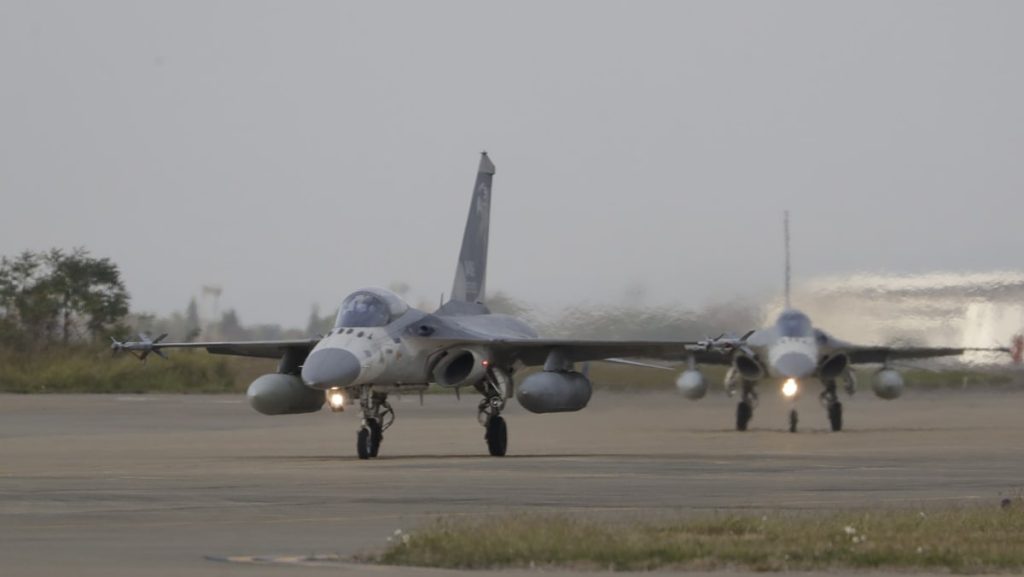The tragic death of a Taiwanese Air Force officer, who was fatally sucked into the engine of an Indigenous Defence Fighter (IDF) jet, has sent shockwaves through the nation and raised serious questions about safety protocols within the Air Force. The incident occurred on Tuesday, January 21st, during a routine post-flight inspection at the Ching Chuan Kang Air Force Base in Taichung. The officer, a female whose identity has been withheld pending notification of next of kin, was conducting a final check of the aircraft after its landing when, for reasons yet undetermined, she was drawn into the powerful intake of the jet’s right engine. Despite being immediately rushed to a nearby hospital, the officer succumbed to her injuries, marking a grim day for the Taiwanese military. The Air Force has initiated a comprehensive investigation into the circumstances surrounding this devastating accident, pledging to implement preventative measures to avert similar tragedies in the future.
This incident underscores the inherent dangers present in the demanding and complex environment of military aviation. Even seemingly routine procedures, such as post-flight inspections, carry significant risks, particularly when dealing with the immense power generated by modern jet engines. While the exact sequence of events leading to the officer’s death remains unclear, the investigation will likely focus on several key aspects, including adherence to established safety protocols, the condition and operation of the aircraft, and any potential human factors that may have contributed to the accident. The presence of safety mechanisms designed to prevent such incidents, such as engine intake guards and warning systems, will also be scrutinized to determine their effectiveness and whether any failures or malfunctions occurred.
The IDF, also known as the F-CK-1 Ching-kuo, is a multirole combat aircraft developed and manufactured in Taiwan. It represents a significant achievement for the island nation’s indigenous defense industry and plays a vital role in Taiwan’s air defense capabilities. Powered by two turbofan engines, the IDF possesses impressive performance characteristics, but its powerful engines also pose inherent risks, particularly during ground operations. The investigation will meticulously examine the specific engine configuration and operating procedures associated with the IDF to identify any potential design flaws or operational vulnerabilities that may have contributed to the tragic accident.
The loss of a skilled and dedicated officer is a profound blow to the Taiwanese Air Force, both in terms of operational capability and morale. The incident highlights the crucial importance of rigorous training, strict adherence to safety protocols, and continuous improvement of safety measures within the military. The Air Force’s commitment to a thorough review of its procedures and implementation of preventative measures is essential to restoring confidence and preventing future tragedies. This includes not only reassessing current safety protocols but also examining international best practices and incorporating lessons learned from similar incidents in other air forces around the world.
Beyond the immediate investigation, the tragic incident raises broader questions about the balance between operational readiness and personnel safety within the military. The demanding nature of military operations often necessitates working in close proximity to hazardous equipment and under challenging conditions. However, the safety and well-being of personnel must always remain the paramount concern. The Air Force’s response to this incident will likely involve a reassessment of existing safety protocols, potentially leading to stricter enforcement, enhanced training programs, and the implementation of new technologies or procedures to mitigate risks associated with aircraft ground operations.
The investigation into this tragic accident will be complex and time-consuming. It will require meticulous analysis of all available evidence, including witness testimonies, technical data from the aircraft, and recordings of communications. The findings of this investigation will be crucial not only for understanding the specific circumstances that led to the officer’s death but also for informing future safety improvements within the Taiwanese Air Force and potentially other air forces around the world. The lessons learned from this tragedy can contribute to preventing similar incidents and ensuring the safety of the brave men and women who serve in the challenging and demanding field of military aviation. The goal is to create a safer working environment where such devastating accidents are not just preventable but unthinkable.

